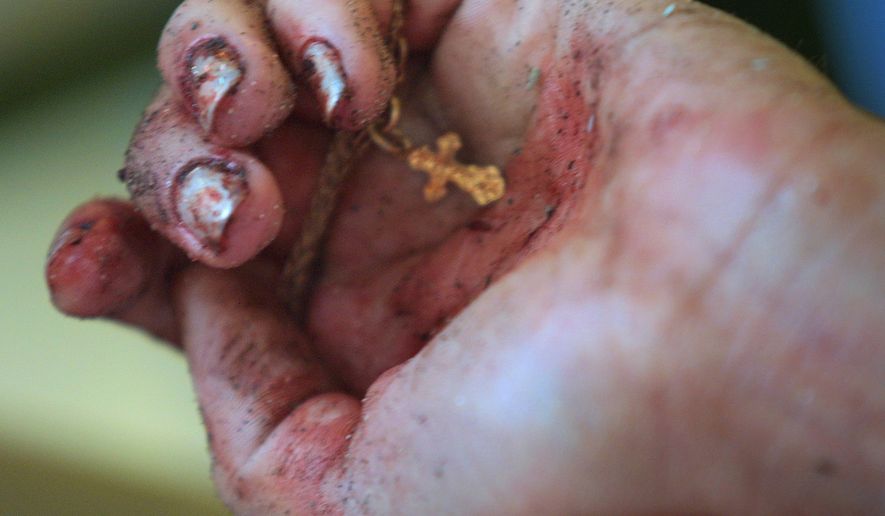Will gun-free zones protect our children from ISIS?
To even ask this question, in the wake of events in Paris and San Bernardino, is absurd.
We are historians, a field that, like oncology, often requires us to assess grim realities. Unfortunately, history offers no shortage of grim realities like those the people of Paris faced last month. And yet from from Pearl Harbor to 9/11 to Paris to San Bernardino, they often take us by surprise. These events remind us that tragically, our sense of safety is often more illusion than reality.
So as historians, what is the lesson we should take from the recent attacks? What are the dangers to which we’re willfully blind? What are the grim realities we’ve been allowing ourselves to ignore?
Surely one lesson of Paris must be that there is no such thing as a gun-free zone. Paris has some of the strictest gun control laws in the world, on a continent where guns are notoriously difficult for law-abiding people to obtain.
No doubt the people of Paris felt safe in this state of unilateral disarmament. They had been assured of their security. Ordinary Parisians didn’t have guns, and neither did most of their police officers. For a time, they had the luxury to consider this a mark of civilization.
After the barbarity of last month’s attacks and the Charlie Hebdo massacre earlier this year, it should be obvious that this is a luxury no Western city can afford. Grim reality has reasserted itself, and once again the cost of our willful blindness has proved devastating.
The truth of this should be clear for all to see, even if, for ideological reasons, those in the White House and State Department refuse to admit it. The methods of violent Islamic supremacists are not a secret: low-tech attacks against soft, undefended targets in order to spread the greatest level of terror and carnage. In a free society, there are more such targets than the police can possibly secure on their own against determined enemies such as these. And in the face of such a threat, we have no choice but to prepare good, law abiding citizens to defend themselves and others in their communities.
In the United States, we have been blind to our most exposed target in part because the threat is so unthinkable. Yet the grim reality is plain: our schools — and as a result, our children — are extraordinarily vulnerable to those who would do us harm.
The only measure of defense at most of our schools is a sign that reads “This Is a Gun Free Zone.” If the perils of this policy were not so atrocious, the hubris would be laughable. It reminds us of the sign that hung in the Gettysburg town cemetery forbidding the discharge of firearms — on the exact ground where Union soldiers would be forced to make a desperate stand against Pickett’s Charge. As much as we’d like to think otherwise, the battlefield is not always of our own choosing.
If you are a parent dropping your child off at school tomorrow, stop for a moment, look at that sign, and ask yourself, “Does this really keep my child safe from the threat of war?” If you are a college student, take a good long look at that sign. Your life or death might be affected by the mentality behind it. And if you are a teacher or professor, ask yourself, “Really: what do I do if that sign doesn’t stop them?”
Every parent, every teacher, and especially every school board member needs to rethink the defense of our most vulnerable and innocent target: our children in our schools. We must rethink how we ask our instructors and students to react to a school attack—for surely the current policy of a sign on the door—and, if that fails, to lock the door, lie down and wait for the danger to pass—is exactly what our enemies expect.
If you doubt the seriousness of the threat, just run a search on the “Beslan Massacre,” the 2004 attack by Islamic radicals in Russia that resulted in the deaths of more than 300 children. Or research the attack late last year on a school in Pakistan. Or the kidnapping of hundreds of girls in Nigeria. These are chilling stories. And they could happen here.
We need a rational debate about that grim reality. Do we really have more to fear from trained personnel — the teachers and administrators who devote their lives to our children’s education — being allowed to carry a concealed weapon than we do from those who would do them harm? Can we at least trust the former military or law enforcement among them?
Our communities and especially our schools need planning and training. Our children’s lives may depend on our willingness to think realistically about protecting them.
Newt Gingrich is a former speaker of the U.S. House of Representatives and a Fox News contributor. William R. Forstchen, Ph.D., is a college professor of history and author of “Day of Wrath,” a novel about the threat of an ISIS attack on American schools.




Please read our comment policy before commenting.